
When I heard that his music was going to be re-explored or even re-explained, I was skeptical at the thought of such an endeavor. Then I heard that it was Meg Okura who was heading the project with her Pan Asian Chamber Jazz Ensemble, a collection of brilliant musicians including the phenomenal Helen Sung, and my trepidation turned to expectation. This is especially true since Meg is a long-time fan of Sakamoto. She can be trusted with the arrangements.
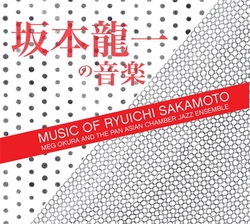
Riot in Lagos is from the B-2 Unit (1980) album is another acoustic interpretation from Sakamoto’s original synthpop into light-funk. There is cool interplay between the lead instruments and bass is a fine feature of the piece. In this--only the second track--it is clear that Meg Okura is not going to disappoint. This track becomes one of the real stand-outs on the album with the hard-groove and near boogie-woogie piano lines.
Violin and bass lines form the basis for Tango which was a vocal piece from the album Smoochy. The violin lead-in is strong and certainly tango-ish. Anne Drummond on flute gets her first spotlight on Tango and, with her fluttering imagery, she gets full attention in the moments she is center-stage.
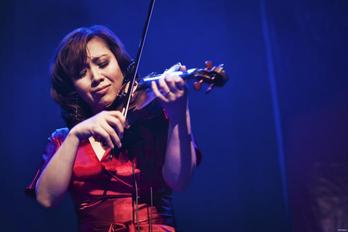 Meg Okura
Meg Okura The unrelenting heartbreak is underscored by E.J. Strickland’s light cymbal swirls and taps and (at the 4:20 mark) Strickland and Douglas seem to offer an illusory escape that is only swallowed up again in the overwhelming sadness of the strings and piano. The triumphant chords towards the end crash and burn in a cascade of anguish before the final resolution.
The piece was disassembled and reconstructed by Meg Okura and she did it flawlessly. I mean, flawlessly. This track is as much her achievement in arrangement as it is Sakamoto’s in composition.
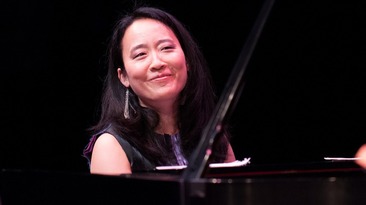 Helen Sung
Helen Sung Also from Sakamoto’s first solo album (Thousand Knives) is The End of Asia. It is the piece that made me a Sakamoto fan ‘way back in 1978. Meg Okura made me remember the love I always had for that piece (and all the others).
It is an extraordinary study in unit cohesion under Meg’s arrangement. The original was in Sakamoto’s innovative style of techno-synthesis and Meg has created what surely must someday become a Jazz standard.
The “in-the-pocket” aggression of Helen Sung’s piano with Douglas and Strickland’s rhythm section is nothing short of thrilling. Meg comes over the top followed by Anne Drummond in striking beauty. The sheer brilliance of performance and arrangement do not blind us to what Sakamoto created so many years ago. This is a triumph for all.
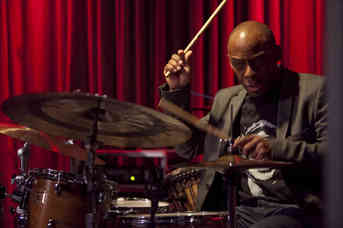 E.J. Strickland
E.J. Strickland Don’t let the English title fool you. It is not a cold instruction to take care of oneself but is, rather, closer to “I’m all right. Everything’s okay. Just take care of yourself.” The second part of the title is important--Ishin Denshin (以心伝心)--and is the Japanese expression for non-verbal understanding. “What the mind thinks, the heart speaks” is one way of stating it. It is what makes words often superfluous in Japanese culture.
In his book Bushido, Inazo Nitobe states that if the profoundest feelings are expressed in words, then those feelings must not really be that profound. The true depths of emotion cannot be verbalized. This is precisely what is felt in this piece. No words can convey but music can truly reveal the depths of the heart.
Anne Drummond again gets a spotlight that she does not shirk. It makes one consider that Meg must have had a discussion with these splendid musicians on just what ishin denshin means because they all portray that feeling so lovingly and with such understanding. It is as if the heart of each of the musicians is felt in their performance of this incredible work.
Meg admits that she has been listening to Sakamoto’s music since she was five years old. It is her thorough understanding of the music of Sakamoto that gives her such authority in presenting this album of his compositions. With each arrangement it is clear that Meg Okura is the true and rightful interpreter of Sakamoto sensei.
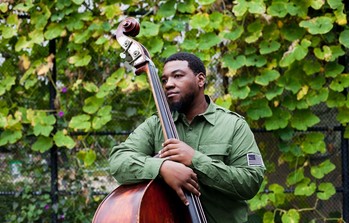 Dezron Douglas
Dezron Douglas Thousand Knives was the first song I ever heard of Sakamoto. It was delightful to see Meg’s inclusion of it on this album and hearing it again as performed by the Pan Asian Chamber Jazz Ensemble left me as thrilled as the first time I heard it. It is rapturous. Every musician works this piece as if they have played it all their lives.
Helen Sung deserves particular attention and she if often playing underneath the violin or flute but every note she plays is meaningful and appropriate. And that rhythm section… Douglas and Strickland just smoke it.
Helen’s Intro is a thing of beauty and at 1:48 is agonizingly brief. However, it is a flowing and flawless set-up for “Water’s Edge” from Sakamoto’s 1994 album Sweet Revenge.
Water’s Edge was a vocal piece and is easily distinguished as such. It takes on a new life, however, in the jazz arrangement. It is lyrical and emotional and very Japanese.
 Anne Drummond
Anne Drummond Soundtracks and TV theme music have lives of their own apart from the video productions they accompany. What may be “incidental music” in the West is a separate work of art in Japan. Whether it is from powerful Taiga dramas like Ryomaden or simple daytime dramas like Gegege’s Wife, the music is touching in the profoundest of ways. It is through Japanese music that a Westerner can even hope to understand what “ishin denshin” means. Even Rachmaninoff never affected me like this.
Perspective is the fitting finale to this magnificent album. It begins with Meg’s broad strokes on the violin which opens room for Helen Sung’s stunning piano work and Anne Drummond’s fanciful flute. This is an unequivocal quintet success.
There is a lightness in the melodic delivery that is so well supported by Douglas and Strickland. The interaction between the musicians is, let me say it, perfect. This is a remix of the original composition and is not a grand departure from it.
The melody is enthralling and the performance is spot-on. It is a very fitting end to an album that I wish were 3 CDs in length but even that would not quench the desire for more.
Meg Okura has chosen rightly from the vast corpus of Sakamoto material that covers almost 35 years. From the whimsical to lyrical to the heart-warming and the profound, she has reinterpreted and reinvented what must never be lost or abandoned. In a world divorced from the synthpop of the 70s and 80s, Meg Okura has given a stunning reintroduction to the music from the genius of Ryuichi Sakamoto.
Get Music of Ryuichi Sakamoto by Meg Okura and The Pan Asian Chamber Jazz Ensemble here:
http://www.cdbaby.com/cd/megokurathepanasianchamb
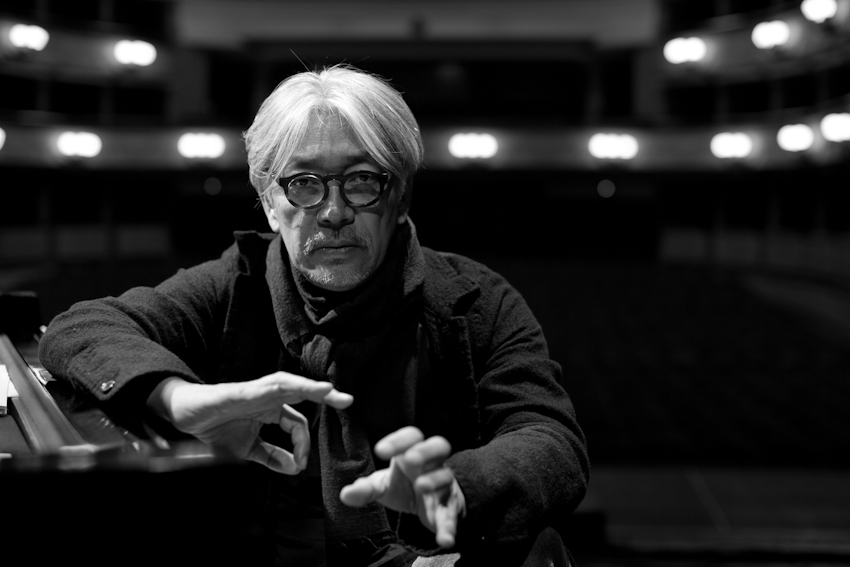
 RSS Feed
RSS Feed
